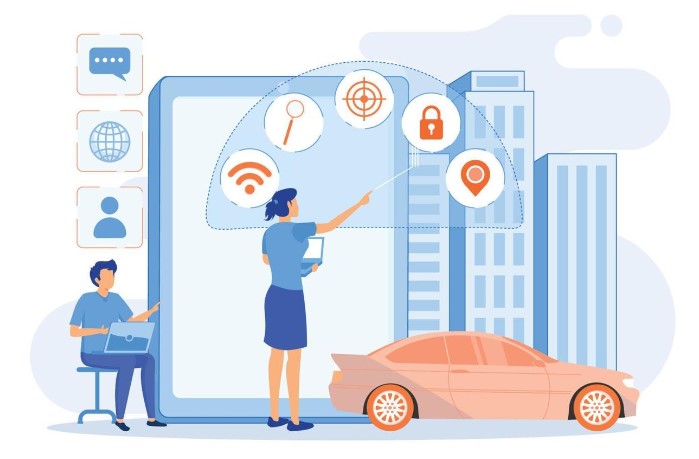Invest in Code Cleaning
Code cleaning is a process of refactoring code to make it more efficient and organized. It involves restructuring the code, streamlining the logic, and simplifying the syntax. Code cleaning is an essential task for any software development project and can have a significant impact on the overall quality of the product. In this article, we'll take a look at the pros and cons of investing in code improvement, as well as the best practices and tools available.
Table of content
Table of Contents
Code cleaning is a process of refactoring code to make it more efficient and organized. It involves restructuring the code, streamlining the logic, and simplifying the syntax. Code cleaning is an essential task for any software development project and can have a significant impact on the overall quality of the product. In this article, we’ll take a look at the pros and cons of investing in code improvement, as well as the best practices and tools available.

What is Code Cleaning?
Code cleaning, an indispensable process in software development, is all about refining the efficiency and organization of your code through savvy restructuring, logic streamlining, and syntax simplification. The primary goal? Boosting code readability, comprehensibility, and maintainability like a pro.
This critical process entails removing superfluous lines, adhering to a consistent style, and enhancing the conciseness of your code. It’s vital to recognize the starring role code improvement plays in any software development project, as it elevates the code’s overall quality.
Neglecting proper code cleaning can leave you tangled in a messy web of code, paving the way for a myriad of bugs and issues. By embracing code improvement, developers can ensure their code is a breeze to understand, slashing the time needed to iron out errors or make future modifications.
Benefits of Code Cleaning
There are many benefits to investing in code cleaning. First, it makes the code easier to read and understand. Code that is well-structured and organized is easier to debug and maintain. It also helps developers to quickly identify and fix issues. code improvement also helps to reduce the amount of code that needs to be written. By simplifying the code, developers can reduce the amount of time they spend writing and debugging the code. This can help to reduce development costs and improve project timelines. Finally, code cleaning helps to ensure that the code is consistent and follows best practices. This helps to improve the overall quality of the product and reduces the risk of bugs.
Potential Drawbacks
Diving into the world of code cleaning, you’ll discover a treasure trove of benefits awaiting. First and foremost, it transforms code into a more readable and comprehensible masterpiece. Well-structured and organized code becomes a cinch to debug and maintain, empowering developers to swiftly pinpoint and squash issues.
Code improvement doesn’t stop there. It also pares down the volume of code needing to be written. By decluttering and simplifying, developers can shave precious time off writing and debugging, ultimately trimming development costs and streamlining project timelines.
Last but not least, code cleaning champions consistency and adherence to best practices. This winning combo boosts the overall quality of your product while reducing the risk of pesky bugs.
The Best Practices for Code Cleaning
Code cleaning is all about embracing best practices that pave the way for top-notch, maintainable code. To elevate your code’s readability, organization, and documentation, developers should follow several key best practices.
First up, consistency is king. Stick to a uniform coding style, including consistent indentation, tabs, spaces, and naming conventions for variables and functions. This not only renders the code more readable and intelligible but also minimizes the risk of pesky errors sneaking in.
Next, focus on keeping your code organized and crystal clear. Break it down into logical chunks and use descriptive variable and function names that truly capture their purpose. This approach enables developers to navigate the code with ease and make changes in a snap.
Finally, don’t forget the crucial role of documentation in code improvement. Documenting your code guarantees its understandability and maintainability, helps spot errors, and offers guidance on remedying them. Thorough documentation makes it a breeze for fellow developers to comprehend and modify the code, even if they didn’t pen it themselves.
Different Tools & Services Available for Code Cleaning
In the vibrant realm of software development, a dazzling array of tools and services awaits to lend a helping hand with code cleaning. Numerous Integrated Development Environments (IDEs), such as Visual Studio Code and Sublime Text, come equipped with built-in code cleaning tools to pinpoint and resolve code issues.
But that’s not all – a plethora of clean code services are also at your disposal. These handy services streamline the process of analyzing and enhancing code quality, freeing up developers to focus on other important tasks. By harnessing advanced algorithms, code cleaning services detect issues within the code and propose optimization strategies. For instance, they can spot redundant code or code that strays from best practices, and then suggest ways to streamline or refactor it.
Code cleaning services truly shine when tackling large codebases, saving developers heaps of time and effort. They’re also a fantastic option for developers who may not be well-versed in code cleaning techniques or best practices.
Conclusion
In conclusion, code cleaning stands as a cornerstone of software development, underpinning the creation of readable, understandable, and maintainable code. A commitment to clean code not only elevates the quality of your product but also streamlines development costs.
While the process may be time-consuming and occasionally introduce bugs, adherence to best practices and the use of proper tools can ensure the successful polishing of your code.
So, as we wrap up our friendly and technically-savvy exploration of code cleaning in the English language, remember that investing in code improvement is an investment in your product’s overall excellence. Embrace this crucial practice, and watch your software projects flourish in both quality and efficiency.


